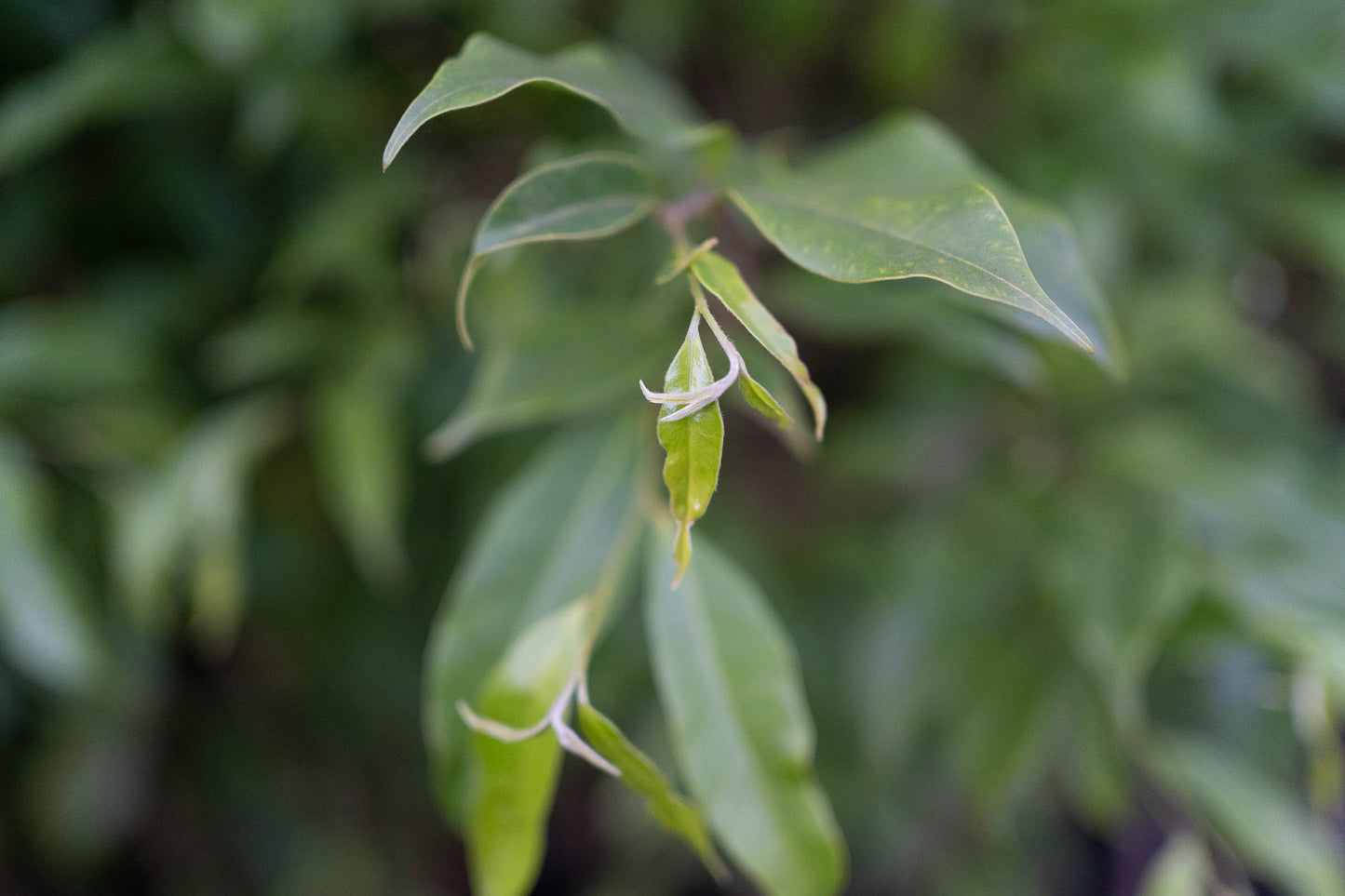Scentient Nature
'OUD TEA' - Aquilaria Malaccensis leaves from Assam cured as delicious tea
'OUD TEA' - Aquilaria Malaccensis leaves from Assam cured as delicious tea
Couldn't load pickup availability
|
Note that there is NO actual "oud" (resin) in this tea: : it consists of the dried leaves of the same tree that produces the precious resin, though. |
The name 'oud tea' is used liberally, both locally in the region of production, and more widely, with variants and vernaculars, to speak of the tea.
In Assam, where I co-produce oud oils, and support ethical village base system of semi-wild (= in a natural mixed ecosystem, not a plantation) natural (= untreated, left to grow wild. and most importantly : non-inoculated) Agarwood / Oud production, I noticed that people were very fond to curing the leaves of the Aquilaria malaccensis tree like tea leaves and enjoying that as a drink, to which they attribute many heath properties. Locally, they refer to it as "oud saai", saai being the local equivalent of "chai" (tea).
The tea smells like the jungle (in a good way): lush vegetation, fragrant mushrooms and an impression of depth of life.
The tea's taste is round, and reminds of good pu-erhs. It is is warming and comforting. It it not strong and has no sharp notes. The texture is remarkably smooth.
It is a remarkably gentle and soothing drink, that can easily be enjoyed at night (as it contains no caffeine at all).
I personally infuse mine at around 90 degrees Celsius for around 10 minutes, but among my different friends who grew like me very fond of this tea, preferences change. So I encourage you to try your own tweaking. Just as with the quantity of leaf material per cup / teapot, and whether you want to infuse it more than once, as the leaves pack a lot of savor that can be expressed in different ways.
Our 'Oud tea' is locally produced in Assam by the same villagers who grow the trees over decades for the precious resin, who are part of the network of people we work with in Assam for the production of our oud oils and resinous woods.
The trees grow semi-wild and grow without any interference, so the leaves have never received any treatments. The drying is done without any additives or tampering: just the traditional way to dry-cure the leaves.
The dried cured leaves are extremely light, of a delicate soft "feathery" texture
Further information
An article on Researchgate with scientific literature review, original research, info on health properties, etc.:
A paper about Characterization-of Agarwood Leaves properties through Methanolic Extracts (among many other articles on similar themes by different authors to explore, for more just follow the references. Hopefully, I'll compile the outcomes in the blog some day ;)
Bottles / Vials Info
Bottles / Vials Info
See and read more about our different vials & bottles before ordering (link here)
Terms, Conditions, Scope of use, etc
Terms, Conditions, Scope of use, etc
We advise that you read this section before buying anything. Any purchase on this website imply that you accept all terms and conditions detailed in there.
Care information
Care information
For optimal longevity:
Keep away from (sun)light, heat, oxidation and external materials in the bottle : they degrade your aromatics.
Keep in the dark at room temperature, ideally below 25 Degrees Celsius
Discounts
Discounts
Check our conditions for automated Discounts and free shipping (click here)












